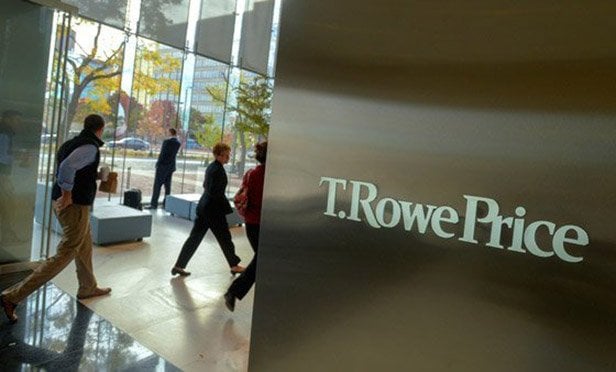Most of the fee disclosure deadlines have come and gone, but the discussion isn’t over. The U.S. Department of Labor is ramping up enforcement efforts heading into 2013 to make sure service providers and plan sponsors have met the requirements of fee disclosure.
Because there’s been a perceived lack of clear instruction and support from the Department of Labor, industry experts have been giving tips to plan sponsors and service providers on how to prepare themselves for a possible DOL audit.
John Sohn, a partner with The Wagner Law Group who specializes in ERISA issues, wants to educate companies about the DOL’s enforcement capabilities. Provisions within the Employee Retirement Income Securities Act empower the Department of Labor to bring civil actions against plans. Those rules also extend to anyone who works with the plans, he says, including plan sponsors, participants and other fiduciaries and affiliates.
“That’s the atom bomb you want to avoid,” Sohn says.
Four reasons you can be targeted
The DOL audit process can take six months to two years, Sohn says. There are four reasons the DOL will single your firm out for an audit:
- A participant complained to the Office of Particpant Education, which is a DOL office similar to the SEC Office of Investor Education or Advocacy, about possible ERISA violations.
- The IRS or SEC referred a case to the DOL.
- The DOL used its National Enforcement Project, which looks at different providers and gathers information about the industry, to pick up low-hanging fruit in terms of audits.
- Form 5500 filings. The new Schedule C requires plan sponsors to report compensation information that they received from providers. The DOL will look at plan sponsors to see if they are filing them correctly.
Preparing for an audit isn’t easy
A DOL audit isn’t easy. Companies have to be prepared to produce detailed records on all of their ERISA clients and host on-site interviews. People are subpoenaed to make sure the DOL’s requests for document production are as complete as possible. They also will interview your personnel. Once the DOL receives all of the information it needs it will send out a closing letter.
“The prize everyone wants to achieve is a no-action letter. They might have found one or two things wrong, but they won’t take formal action against the provider,” Sohn says. The second option is a voluntary compliance letter, which is anything but voluntary, Sohn says.
If a company fails to rectify the problems the DOL investigators identified the voluntary compliance letter will be rescinded and a litigation letter will be sent. If that happens providers will end up in court because they were found to have violated provisions of ERISA and a 20 percent penalty will be assessed, he says.
So how do you prepare for an audit? Sohn recommends 12 best practices.
- Maintain a stand-alone ERISA policy, a one-page notice that cross references your other policies and shows you’re thoughtful about ERISA and what your enhanced standard of care is for your plan clients.
- Track all client accounts that are subject to ERISA.
- Formalize your procedure for 408(b)(2) notices and updates.
- Maintain model client documents that reflect current law. Review disclosures, RFP materials and make sure you have updated 404(a)(5) and 408(b)(2) notices.
- Make sure all client service agreements are signed.
- Develop a model response to plan clients for routine 5500 information requests. Make sure that what you disclose in your Form 5500 matches your 408(b)(2) disclosures.
- For fiduciary services, ensure compensation is level. Are advisors or service personnel acting as functional advisors even if they don’t hold themselves out as a fiduciary? Any fees for services, compensation, revenue sharing and shareholder service payments, all of that would have to be offset or levelized against direct compensation.
- Referrals are fully disclosed and don’t violate prohibited transaction rules.
- Confirm that your affiliated and third party subcontractors are fully disclosed and don’t violate prohibited transaction rules.
- Provide ongoing education and training for your employees.
- Include ERISA items in any internal audits.
- Benchmarking. Look at the fees others are charging and make sure yours are reasonable.
Get your high-level liaison ready
To best prepare for a DOL audit, Sohn recommends choosing one high-level person at your company to serve as a liaison with the DOL investigator. He also recommends that companies ask permission to bring in ERISA counsel to help them comply with the audit. Negotiate the scope of the document request. It’s much easier to produce a sampling of documents than every document that pertains to the investigation.
Perform a legal review of anything you give to the DOL and if you discover discrepancies in your own internal investigation, be proactive and tell the DOL what you will do to remediate the prohibited transaction. Also, prepare personnel for on-site interviews, it’s important to know what you are going to say to an investigator.
Continue Reading for Free
Register and gain access to:
- Breaking benefits news and analysis, on-site and via our newsletters and custom alerts
- Educational webcasts, white papers, and ebooks from industry thought leaders
- Critical converage of the property casualty insurance and financial advisory markets on our other ALM sites, PropertyCasualty360 and ThinkAdvisor
Already have an account? Sign In Now
© 2024 ALM Global, LLC, All Rights Reserved. Request academic re-use from www.copyright.com. All other uses, submit a request to [email protected]. For more information visit Asset & Logo Licensing.








